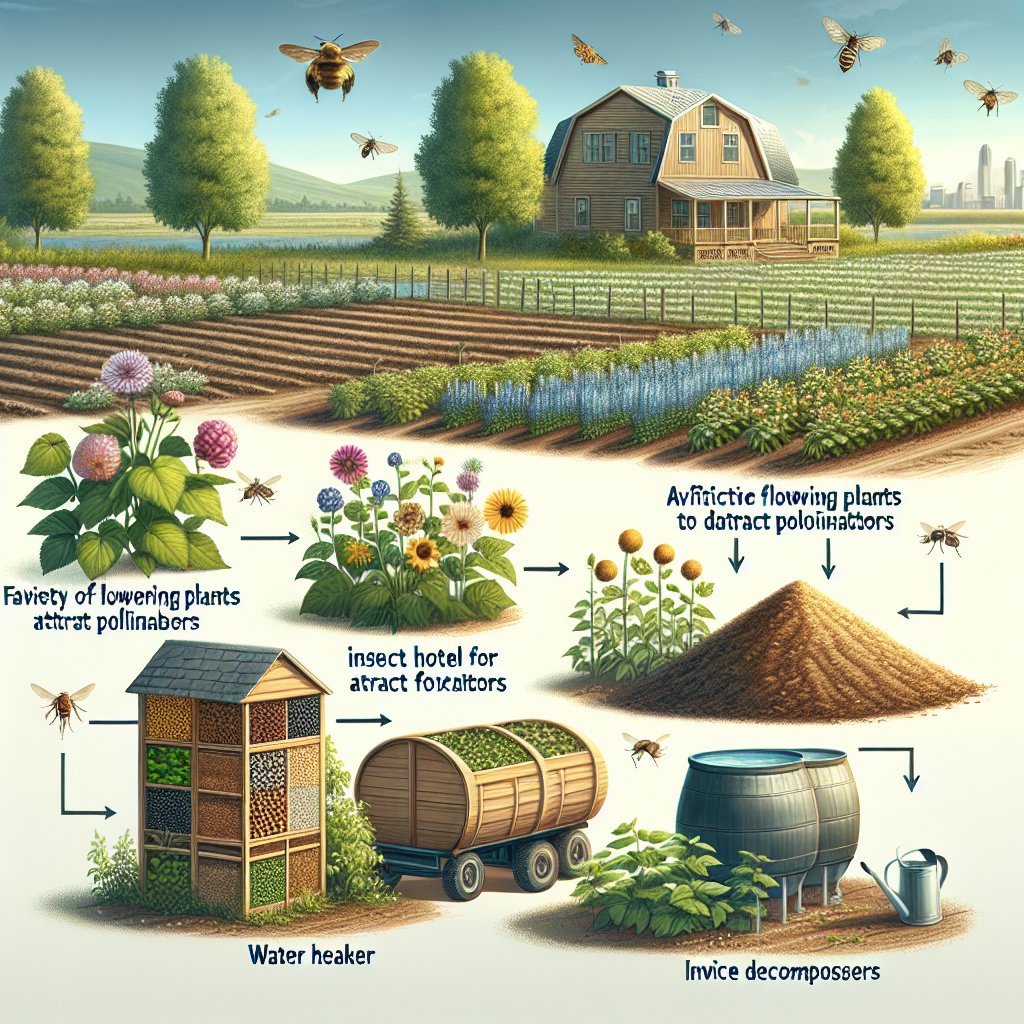
Attracting beneficial insects to your farm is a sustainable and effective way to enhance crop production and maintain ecological balance. Beneficial insects, such as pollinators and natural predators, play a crucial role in agriculture by improving pollination and controlling pest populations. This article explores the best strategies to attract these helpful creatures to your farm, ensuring a thriving and productive agricultural environment.
Understanding Beneficial Insects
Before delving into the methods of attracting beneficial insects, it is essential to understand who these insects are and the roles they play in agriculture. Beneficial insects can be broadly categorized into two groups: pollinators and natural predators.
Pollinators
Pollinators are insects that facilitate the reproduction of flowering plants by transferring pollen from one flower to another. This process is vital for the production of fruits, vegetables, and seeds. Common pollinators include bees, butterflies, and certain species of beetles and flies. By enhancing pollination, these insects contribute to increased crop yields and improved quality of produce.
Natural Predators
Natural predators are insects that help control pest populations by preying on them. These beneficial insects include ladybugs, lacewings, and predatory beetles, among others. By keeping pest numbers in check, natural predators reduce the need for chemical pesticides, promoting a healthier and more sustainable farming environment.
Creating a Habitat for Beneficial Insects
To attract beneficial insects to your farm, it is crucial to create an environment that meets their needs for food, shelter, and reproduction. Here are some strategies to achieve this:
Planting Diverse Crops
Diversity in crop planting is one of the most effective ways to attract beneficial insects. By cultivating a variety of plants, you provide a range of food sources and habitats for different insect species. Consider planting flowering plants alongside your crops, as they offer nectar and pollen for pollinators. Additionally, intercropping and crop rotation can help maintain a balanced ecosystem, supporting both pollinators and natural predators.
Establishing Flowering Borders
Creating flowering borders around your fields can serve as a magnet for beneficial insects. These borders should include a mix of native wildflowers and flowering shrubs that bloom at different times of the year, ensuring a continuous supply of nectar and pollen. This not only attracts pollinators but also provides habitat for natural predators, enhancing their ability to control pests.
Providing Shelter and Nesting Sites
Beneficial insects need safe places to rest, hide from predators, and reproduce. You can provide shelter by leaving some areas of your farm undisturbed, allowing natural vegetation to grow. Additionally, installing insect hotels or nesting boxes can offer suitable nesting sites for solitary bees and other beneficial insects. These structures can be made from materials like wood, bamboo, and straw, and should be placed in sunny, sheltered locations.
Minimizing Chemical Use
The use of chemical pesticides and fertilizers can have detrimental effects on beneficial insect populations. To attract and maintain these insects on your farm, it is important to minimize chemical use and adopt more sustainable practices.
Implementing Integrated Pest Management (IPM)
Integrated Pest Management (IPM) is a holistic approach to pest control that combines biological, cultural, and mechanical methods to manage pest populations. By using IPM strategies, you can reduce reliance on chemical pesticides, creating a more favorable environment for beneficial insects. Techniques such as crop rotation, trap cropping, and the use of natural predators can effectively control pests while preserving beneficial insect populations.
Using Organic Fertilizers
Organic fertilizers, such as compost and manure, are less harmful to beneficial insects compared to synthetic fertilizers. They improve soil health and provide essential nutrients for plant growth without the negative impacts associated with chemical fertilizers. By using organic fertilizers, you can create a healthier ecosystem that supports a diverse range of beneficial insects.
Monitoring and Maintaining Beneficial Insect Populations
Once you have attracted beneficial insects to your farm, it is important to monitor their populations and ensure their continued presence. Regular monitoring can help you assess the effectiveness of your strategies and make necessary adjustments.
Conducting Regular Surveys
Conducting regular surveys of your farm can help you track the presence and abundance of beneficial insects. This can be done through visual inspections, sweep netting, or using traps. By keeping records of insect populations, you can identify trends and make informed decisions about your farming practices.
Adjusting Practices Based on Observations
Based on your observations, you may need to adjust your farming practices to better support beneficial insects. This could involve altering planting schedules, introducing new plant species, or modifying pest management strategies. By being responsive to the needs of beneficial insects, you can ensure their continued presence and contribution to your farm’s success.
Conclusion
Attracting beneficial insects to your farm is a valuable strategy for enhancing crop production and maintaining ecological balance. By understanding the roles of pollinators and natural predators, creating suitable habitats, minimizing chemical use, and monitoring insect populations, you can create a thriving environment that supports these essential creatures. Embracing these practices not only benefits your farm but also contributes to a more sustainable and resilient agricultural system.

